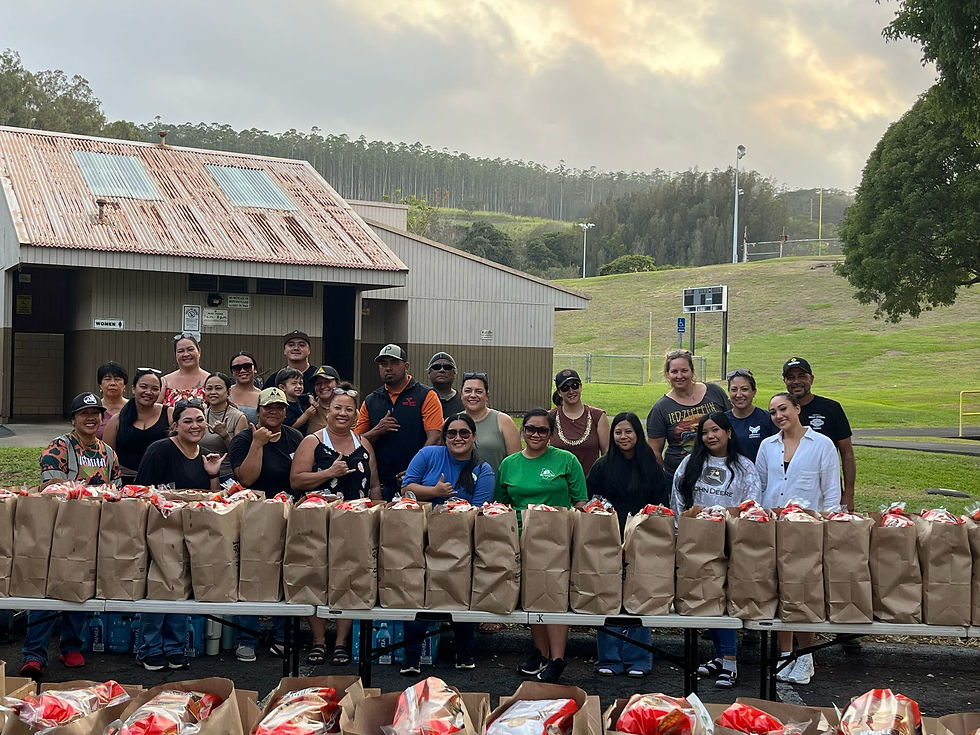Bridging Gaps, Building Futures
- Kakoo Support
- Feb 19, 2024
- 3 min read
As our island navigates a growing need for a skilled workforce to meet industry and community needs, the role of work-based learning (WBL) on Hawaiʻi Island has become more pivotal than ever. WBL connects the aspirations of students seeking real-world career experiences with opportunities offered by employers and industries. It is a critical tool for community development, local economic growth, and personal empowerment, acting as a bridge between classrooms and workplaces, theory and practice, dreams and reality. The report: Bridging Gaps, Building Futures highlights unique findings that are directly voiced by the youth of our island, creating ways to inform the future of work-based learning in Hawaiʻi.
Key Findings
There is a disconnect identified between students and their educators: What students want to learn and explore for future careers, and what educators and industry experts see as priority careers. According to over 1,300 surveys, students expressed a high interest in creative arts and industries, whereas a large majority of educators do not perceive the arts as valuable for opportunity and growth. The alignment of education and student aspirations is pivotal in shaping a future that inspires the upcoming generation to reach their dreams, and to ensure that they feel deep fulfillment in the jobs that sustain them.

A third stakeholder group representing local businesses, provided researchers insight on the barriers to engaging in the spectrum of work-based learning opportunities, namely, not having enough staff members, limited financial resources and time constraints.

Recommendations
Based on these findings, hiring full-time staff dedicated to coordinating work-based learning programs was identified as a key solution. Further recommendations include creating a centralized platform for easy access to work-based learning opportunities, addressing financial and transportation barriers, expanding practical learning experiences, and including work-based learning into school schedules. In addition, reevaluating and adapting curriculum to meet student needs is just as vital. Encouraging student choice and engagement, truly making students feel heard, and preparing students for diverse futures are central to fostering an impactful and meaningful learning environment for Hawaiʻi Island's youth.
Next Steps
We all can contribute toward providing Hawaiʻi Island youth a pathway toward meaningful learning and work opportunities. To contribute, you can:
Serve as a guest speaker to broaden students' career options. To learn more, contact your local school or sign up at ClimbHI.
Provide job shadowing opportunities (short-term, for example, Spring Break) for students to gain firsthand experience. Many students in the 11th and 12th grade are required to explore job shadowing opportunities. Consider opportunities that may be accessible remotely.
Host a high school or college intern. Many youth are looking for opportunities during the summer break.
Did you know?

Vibrant Hawaiʻi Ambassador program engages youth and young adults ages 16-24 to lead in career awareness, exploration, preparation, and training? Recent Ambassador, Benjamin Rudo says, “My roots in the community have grown deeper. I feel like I have a much stronger foundation for success. I know professionals I can consult for advice and organizations I can collaborate with on projects. I am far more comfortable engaging with strangers and creating conversations. Ultimately, I feel prepared to exceed in any setting whether professional, personal, formal or informal."
Click HERE to learn more about the Ambassador Program.
At Vibrant Hawaiʻi, we are committed to continuing to convene conversations to promote cross sector collaborative action and information sharing to ensure equitable access to resources and opportunities. In addition, we are exploring opportunities to formally serve as an intermediary, connecting students, educators, and employers in meaningful engagement across the work based learning spectrum. We are grateful for the students of Hawaiʻi Island, our educators, and business partners who participated in the study. Mahalo nui for Hawaiʻi Workforce Funders Collaborative and Hawaiʻi P20 for their support of the study.
Click the button below to read the full report.




Comments